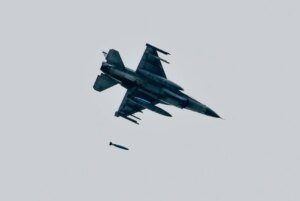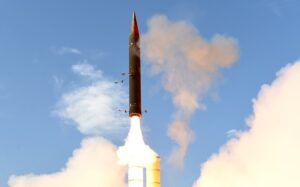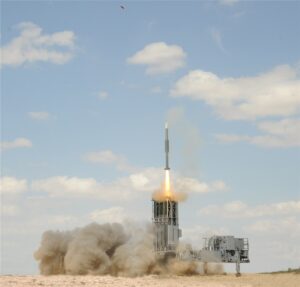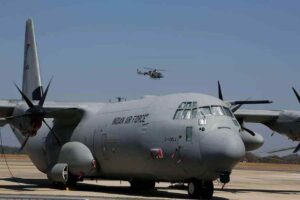乌克兰击落升级版俄罗斯无人机,配备中国电子设备
快速阅读: 技术分析显示,升级版Shahed无人机采用伊朗制造结构件、俄罗斯提供动力单元及进口电子系统,具备多星座GNSS接收器、Pixhawk控制器等先进航电设备,提高导航精度和生存能力,俄罗斯在俄乌冲突中大量使用该型无人机执行侦察、打击任务,乌克兰则不断强化防空体系应对。
Technical analysis of the recovered wreckage indicates that this variant retains the Shahed’s recognizable delta-wing airframe and pusher-propeller configuration, powered by a small gasoline engine delivering sustained cruising speeds of 150 to 180 km/h. The warhead is assessed to be in the 30 to 40 kilogram range, capable of causing significant damage to infrastructure targets. The most important upgrades are in the avionics suite: CUAV’s high-precision multi-constellation GNSS receiver, operating across GPS, GLONASS, BeiDou, and Galileo signals, provides robust positioning even in environments with heavy jamming. The autopilot is believed to be CUAV’s Pixhawk-based high-integration controller, enabling adaptive route correction, terrain-following flight at altitudes as low as 60 meters, and automatic reversion to inertial navigation in the event of satellite signal loss. Enhanced pitot-tube airspeed sensors and dual IMUs improve stability and flight endurance, potentially extending operational range beyond 1,200 kilometers when coupled with optimized flight profiles.
From a tactical and operational perspective, these avionics improvements offer Russia notable advantages in contested airspace. The increased navigation resilience allows for more complex preprogrammed routes that exploit weaknesses in radar coverage and approach angles that reduce the effectiveness of Ukrainian surface-to-air missile batteries. The upgraded stability and control systems mean that the drones can operate at sustained low altitudes with minimal oscillation, making them harder to detect and track. When used in coordinated swarms, this stability facilitates tighter formation flying, overwhelming air defenses and increasing the probability that at least some drones will penetrate to their target area. The improved guidance accuracy also enables more precise strikes against point targets, such as ammunition depots, radar installations, or bridges, expanding the Shahed’s operational role beyond indiscriminate area bombardment to precision strike missions. In reconnaissance or electronic warfare configurations, the same avionics could support persistent loitering and more effective sensor deployment.
Evidence from this and previous recoveries suggests that the upgraded Shaheds are assembled using a combination of Iranian-manufactured structural components, Russian-supplied propulsion units, and imported electronic systems sourced through complex procurement networks. Chinese CUAV products are readily available on the commercial market but are subject to export controls when designated for military use. The presence of these systems on Russian-operated UAVs points to the exploitation of intermediary companies and third-country transshipment points, making enforcement of sanctions more challenging. This blended supply chain approach enables rapid production cycles and iterative upgrades, mirroring the fast adaptation cycles seen in commercial drone industries.
The interceptions highlight Ukraine’s continued refinement of its integrated air defense network. This layered approach combines early warning radars, mobile short-range air defense vehicles, man-portable air defense systems, and electronic warfare units capable of disrupting UAV control and navigation signals. Ukrainian units have also deployed counter-drone radar systems optimized for detecting low, slow, and small targets, paired with automatic cueing to air defense weapons. These capabilities have proven increasingly effective against massed drone attacks, though officials warn that continued Russian upgrades may demand equally rapid defensive innovation.
The deployment of this upgraded Shahed variant occurs amid a steady intensification of UAV use in the Russia-Ukraine war. Both nations have come to rely heavily on unmanned systems for intelligence, surveillance, target acquisition, and precision strike missions, with drone losses rapidly replenished through accelerated production and foreign procurement. The conflict has shifted toward a war of attrition where unmanned platforms are not only expendable tools but also key instruments in eroding the opponent’s combat capability over the long term. For Russia, the Shahed series remains a cost-effective long-range strike option, while continuous upgrades such as Chinese avionics help offset losses and counter evolving Ukrainian defensive measures. For Ukraine, intercepting these systems before they can complete their missions is both a tactical necessity to protect critical infrastructure and a strategic effort to prevent Russia from gathering real-world performance data that could inform further iterations.
Strategically, the incident underscores a broader global security concern: the ability of states under heavy sanctions to adapt and modernize their arsenals by leveraging civilian technology. The CUAV components found in the wreckage are technically commercial products, yet when integrated into a military platform, they significantly enhance lethality and survivability. This blurring of civilian and military technology complicates export control regimes and may prompt NATO and allied states to push for stricter regulations on UAV-related electronics. Meanwhile, the battlefield reality remains that both sides are locked in a cycle of measure and countermeasure, with technological innovation occurring on timelines measured in weeks rather than years.
(以上内容均由Ai生成)








